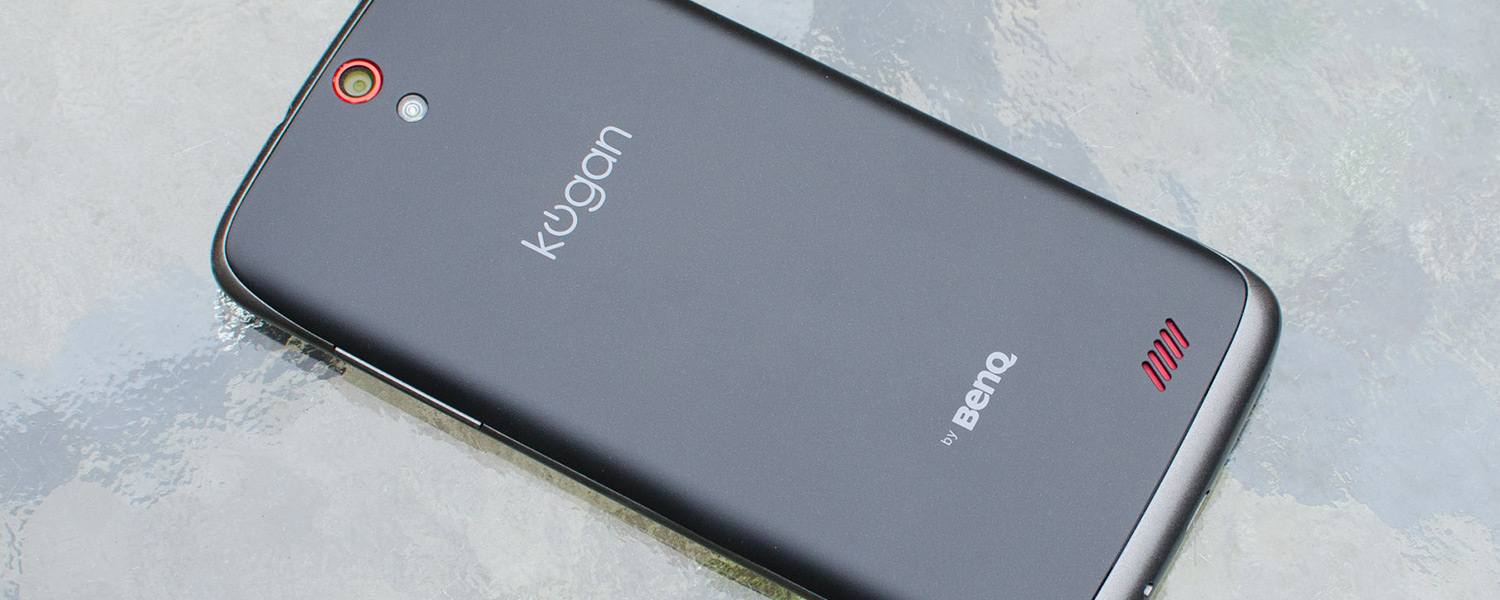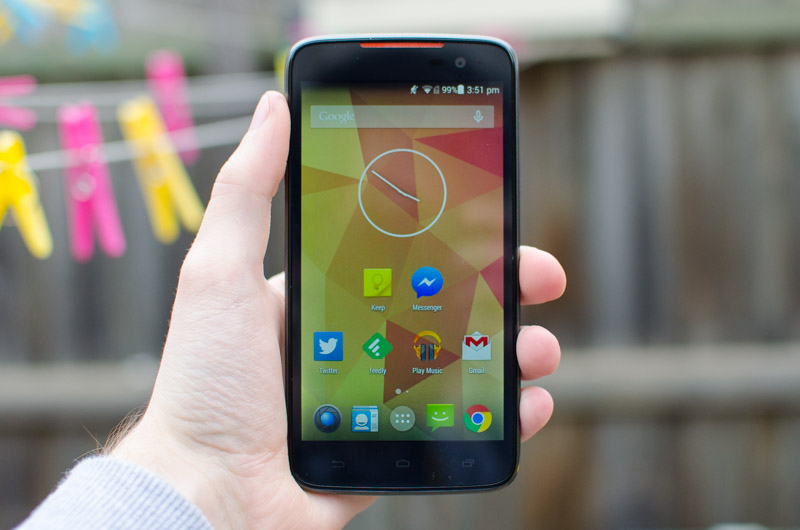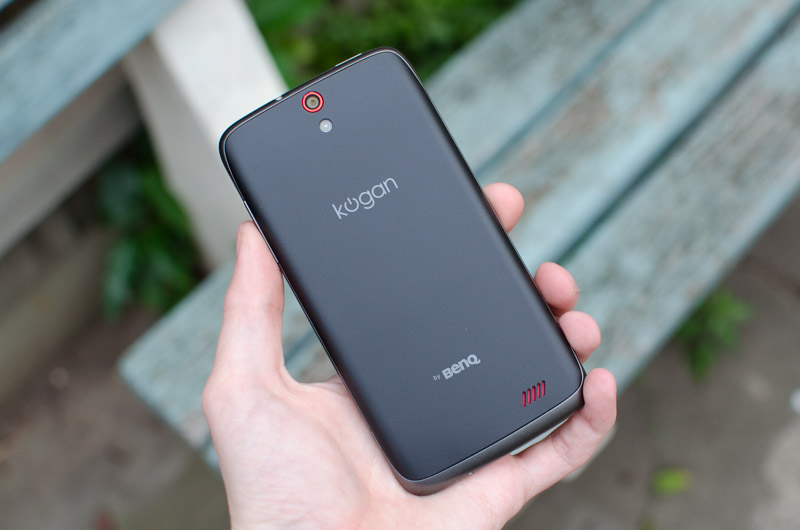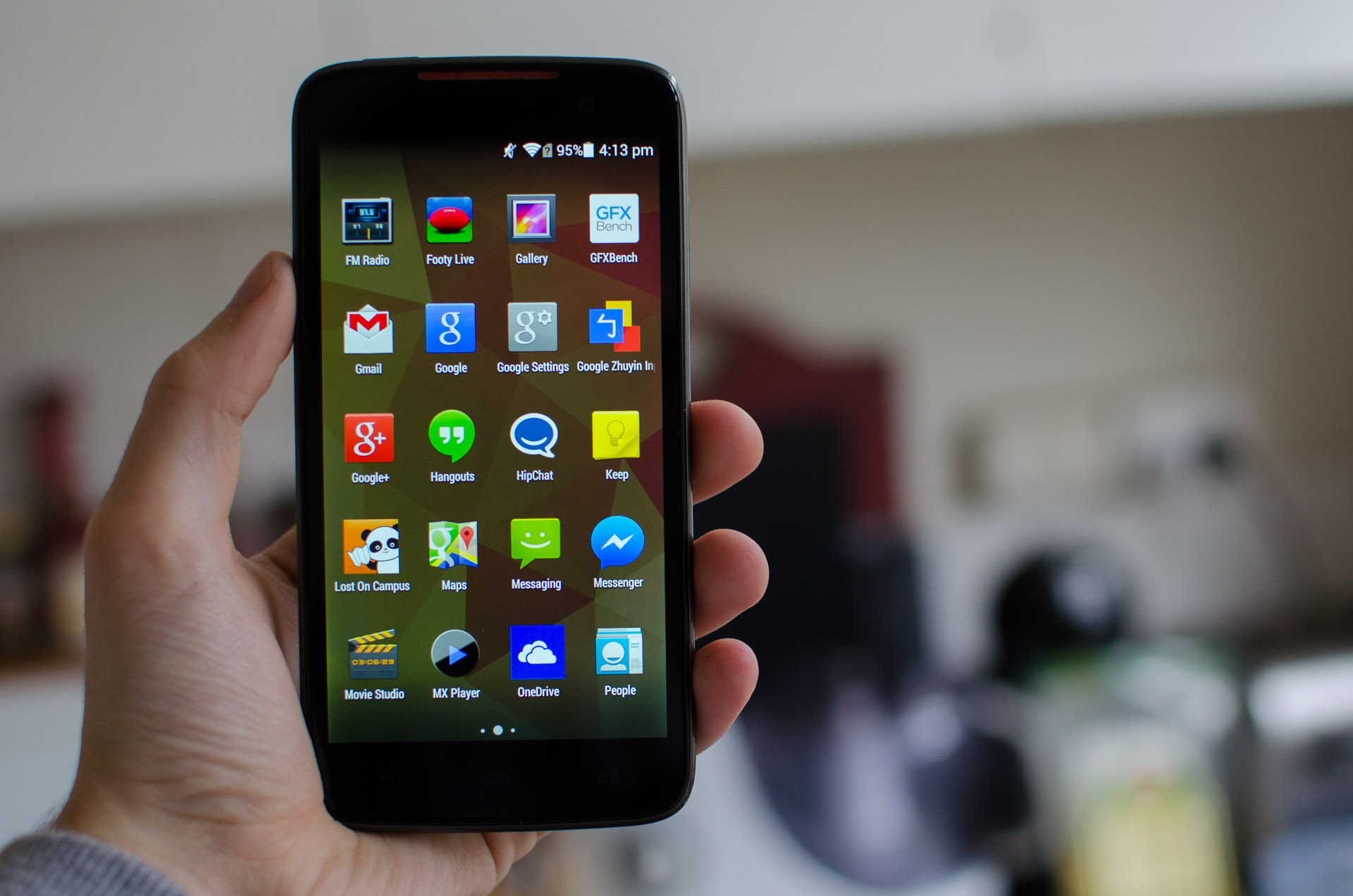The entry-level smartphone market is so big these days that basically every company out there wants a slice of the sales pie. Everyone from HTC, Nokia and Samsung to Asus, Motorola and Xiaomi have devices on sale in the $200 price segment, some of which are decent and others which require a bit more polish.
One company looking to increase their exposure worldwide and grab a slice of that sweet entry-level pie is Kogan. For those of you outside of Australia, you've probably never heard of the name 'Kogan'; for the Aussies reading this article, you'll probably be familiar with their low-cost electronics, specifically televisions, which they sell through their online-only store.
Kogan has dabbled in the mobile phone market a few times, but the Agora 4G is their first real push into not only the Australian market, but worldwide. The Agora 4G is available from their online store in most countries around the globe, including the United States, where it retails for just $219. This places it in very close company with handsets like the 2014 Motorola Moto G, and the recently-reviewed Asus Zenfone 5, albeit for a $50 premium.
Kogan Agora 4G - $219 unlocked
- 5.0", 1280 x 720 LCD display (293 ppi)
- Qualcomm Snapdragon 400 SoC
- 1.2 GHz quad-core CPU, Adreno 305 GPU, 1GB RAM
- 8 GB internal storage, microSD card slot
- 8 MP camera, 1/3.2" sensor, 1080p video
- 2,500 mAh, 9.5 Wh battery
- LTE, Wi-Fi b/g/n, Bluetooth 4.0
- Android 4.4 'KitKat'
- 135 grams, 9mm thick
The Agora 4G is a Kogan-branded phone, although it's actually manufactured by BenQ's ODM division, as indicated by a small BenQ logo on the back of the handset. The phone's standout feature is its 5.0-inch 720p display, paired with a Qualcomm Snapdragon 400 SoC. On the back you'll find an 8-megapixel camera, and inside is a sizable 2,500 mAh battery.
The specifications of the Agora 4G are very similar to the newly-announced Motorola Moto G, which means that execution needs to be perfect on Kogan's end to get it to compete. The Agora has a leg up in that it supports LTE connectivity, but will that be enough for it to secure the cash from a prospective buyer?
Design-wise the Agora 4G is bland and uninspiring, offering the necessities without going overboard on style or ergonomics. The handset is a basic rounded rectangle, with glass protecting the large display on the front, cheap plastic around the edges, and a soft-touch removable back cover. It's a basic combination that you could easily apply to any generic smartphone.
In constructing this smartphone, BenQ have attempted to add a bit flair to the black slab design through a few red highlights, which can be found in both speaker grills and around the camera lens. It's a nice touch, but not enough to lift the Agora 4G into the same aesthetic category as Nokia's entry-level devices, for example.
The build quality of the Agora 4G isn't anything to write home about either: the majority of the device is made from plastic, which is cheap and unappealing. The back cover is a slightly different kind of plastic to the sides, coated with a material that's softer to touch. It feels reasonable in your hands, although it has a habit of getting easily coated with greasy fingerprints.
The back cover is removable, revealing the microSD card slot, micro-SIM card slot, and... well... a giant piece of metal. Despite the fact the back cover can be removed, there's no removable battery to be found, with the 9.5 Wh cell sitting behind the slab of metal. This is pretty disappointing to see, and makes the removable back cover almost pointless.
Capacitive touch buttons are used for the main navigation controls on the Agora 4G, with BenQ deciding to backlight them, unlike with the Asus Zenfone 5. Above the display, which occupies 66% of the front panel's surface area, you'll find a 2-megapixel front-facing camera, the in-call speaker and some sensors.
For some bizarre reason, the power button on the Agora 4G is along the top edge of the handset, beside the 3.5mm headphone jack. For a 5.0-inch smartphone with a height of 143mm, the power button can be a tad awkward to press; I'd prefer it if it were located on the right edge, roughly where the volume rocker is currently found. There's nothing on the device's left edge, while the microUSB port is on the bottom.
Like the design, the display isn't anything to write home about. The panel is a 5.0-inch TFT LCD with a resolution of 1280 x 720, which equates to a pixel density of 293 PPI. Just on specs you'd say this is a decent mid-range panel that is more than enough for a sub-$250 device, and in some cases this is true. However the use of a low-end IPS display makes its quality inferior to that of its competitors.
The main issue with the Agora 4G's display is that it's not as saturated as either the Moto G's or the Zenfone 5's. I'm not expecting flagship-like color accuracy or quality, but the Agora 4G's panel appears less vibrant than its competitors. This leaves photos and other imagery looking a bit underwhelming compared to what you'd expect.
That said, the white balance exhibited by the display is good, and you even have the ability to alter it in the device's settings. Turning on "low blue light mode" reduces the blue level of the display, making it appear much warmer than usual. There are three levels of low blue light mode, each with increasing warmth, which could come in handy when reading stuff on the handset at night. Other than that, I'd leave it disabled for the majority of usage.
While the Agora 4G's display is more than bright enough for indoor usage, it can be hard to read when outdoors. Full brightness just doesn't seem to cut it, with the panel seemingly lacking any sort of reflection-cutting layers. Viewing angles aren't terrible, but there is a noticeable reduction in clarity when the display is viewed at off-normal angles.
I was impressed with the clarity of the Agora's display, which can be put down to its 720p resolution. More and more manufacturers are including HD panels with their entry- and mid-range handsets, replacing qHD and WVGA units, which is great to see. Of course it's no 1080p or 1440p, but text looks crisp and generally fantastic on this display, and photos have enough detail in them to satisfy.
The display's size will also appeal to a number of people, with most options in the price range of the Agora 4G including smaller or lower-resolution panels. The obvious exceptions are the Zenfone 5 and Moto G that I've mentioned earlier, both of which pack similar 5-inch displays. How the Agora fares in other aspects will be critical if it's to beat those devices.














